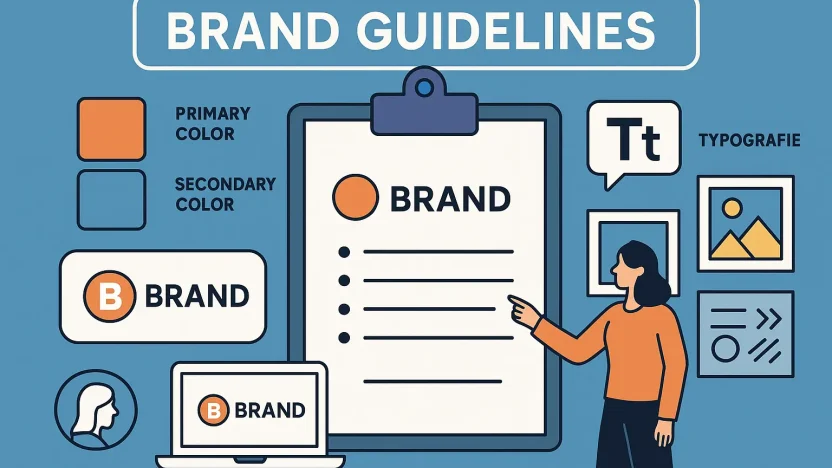Brand Guidelines: Step-by-Step Guide to Building Your Brand Identity
Every successful brand has one thing in common: consistency. And the secret to that consistency? Brand guidelines. Whether you’re building a business from scratch or rebranding an existing one, creating clear, usable brand guidelines is a game-changer.
In this post, we’ll walk you through exactly how to create your own brand guidelines—from logo rules to tone of voice—so your brand always shows up strong, no matter where it appears.
What Are Brand Guidelines?
Brand guidelines are a set of rules that define how your brand looks, sounds, and behaves. They’re your brand’s style manual, covering visual identity, messaging, and overall personality. Think of them as a blueprint for how others should present your brand when you’re not in the room.
Why Are Brand Guidelines Important?
Without brand guidelines, your identity can get diluted fast—especially when multiple people (or teams) create content. Here’s what brand guidelines help with:
- Visual consistency across platforms and materials
- Voice alignment in all copy and communication
- Trust and professionalism with your audience
- Onboarding speed for new team members or freelancers
How to Create Your Brand Guidelines: Step-by-Step
1. Define Your Brand’s Core Identity
Before diving into visuals, clarify the “why” behind your brand:
- Mission: Why do you exist?
- Vision: Where are you going?
- Values: What do you stand for?
- Personality: Are you playful, professional, edgy, kind?
This forms the foundation for all other elements.
2. Logo Usage Rules
Your logo is your brand’s face. In your guidelines, include:
- Approved logo variations (primary, secondary, icon-only)
- Minimum size and clear space rules
- Background do’s and don’ts
- Incorrect usage examples
3. Color Palette
Choose a consistent set of brand colors:
- Primary colors: The core hues of your brand
- Secondary colors: Supportive shades for contrast or accents
- Hex, RGB, and CMYK values for each color
4. Typography
Specify the fonts your brand uses, including:
- Primary font (headlines)
- Secondary font (body text)
- Usage hierarchy (H1, H2, paragraph, etc.)
If possible, choose web-safe or Google Fonts for better compatibility.
5. Imagery and Graphics
Clarify your brand’s photography style, illustrations, icons, and graphic treatments:
- Image tone (bright and airy vs. moody and minimal)
- Filter or editing style
- Illustration do’s and don’ts
6. Voice and Tone
This is where you explain how your brand “talks.” Include:
- Writing style: casual, professional, quirky, etc.
- Words or phrases to use (and avoid)
- Examples of tone in different situations (support, marketing, social media)
7. Brand Applications
Show your guidelines in action with real examples:
- Social media posts
- Website design
- Email templates
- Business cards or print assets
Tips for Keeping Brand Guidelines Useful
- Make it visual and easy to scan—no walls of text
- Host it in a cloud-based format (like Notion, PDF, or Canva Brand Hub)
- Update it regularly as your brand evolves
Final Thoughts
Guidelines aren’t just for big corporations—they’re essential for any business that wants to grow with consistency. They help your brand look sharp, sound right, and build trust across every touchpoint.



